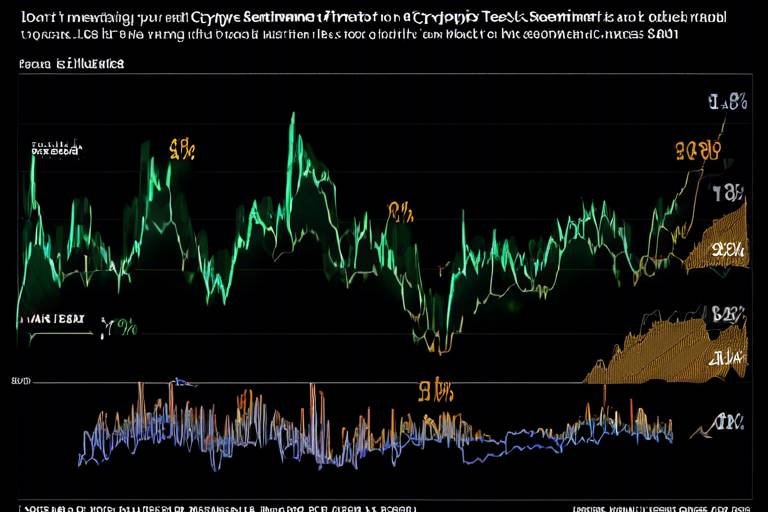Trends in Crypto Security - Multi-Signature Wallets
The world of cryptocurrency is constantly evolving, and with it comes the pressing need for robust security measures. One of the most significant trends currently shaping the crypto security landscape is the adoption of multi-signature wallets. These innovative wallets are becoming essential tools for both individual investors and businesses, offering enhanced protection against the ever-growing threats of cybercrime. So, what exactly are multi-signature wallets, and why are they gaining such traction in this digital age? Let’s dive into the details!
At its core, a multi-signature wallet, often abbreviated as multi-sig wallet, is a type of digital wallet that requires multiple signatures to authorize a transaction. This means that instead of a single private key granting access to funds, multiple keys are needed from different parties to complete any transaction. This feature significantly enhances security, making it much harder for hackers to gain unauthorized access to your assets. Imagine trying to break into a vault that has not one, but several locks, each requiring a unique key! This is the essence of multi-signature wallets, providing a formidable barrier against theft and unauthorized access.
Multi-signature wallets come with a plethora of advantages that make them highly appealing. First and foremost, they offer improved security. By requiring multiple approvals for transactions, the risk of hacking is drastically reduced. Additionally, these wallets provide enhanced control over funds, allowing users to delegate access and permissions among trusted parties. This is particularly beneficial for businesses that manage corporate funds or for families managing joint accounts. Furthermore, shared access makes it easier to collaborate on transactions without compromising security.
The multi-signature approach brings a myriad of security features that bolster protection against cyber threats. One of the standout benefits is the protection against single points of failure. In traditional wallets, if a hacker obtains a single private key, they can drain the wallet completely. However, with multi-signature wallets, a hacker would need to compromise multiple keys, which is considerably more challenging. This multi-layered security is akin to having a fortress with several gates, each requiring different keys to unlock.
By demanding multiple keys for transaction approval, multi-signature wallets effectively eliminate the risk associated with a single point of failure. This means that even if one key is compromised, the funds remain secure as long as the other keys are intact. This feature provides peace of mind for users who may fear losing access to their funds due to theft or loss of a single key.
Another significant advantage of multi-signature wallets is their superior recovery options in the event of lost keys. Users can set up recovery methods that allow access to funds even if one or more keys are lost. For instance, a wallet can be configured to require only two out of three keys for access, meaning that as long as two keys are safe, the user can still retrieve their assets. This flexibility is crucial for maintaining access and ensuring that investments are not permanently locked away due to unforeseen circumstances.
Multi-signature wallets are not just a theoretical concept; they have practical applications in various scenarios. For instance, they are ideal for joint accounts, where multiple family members or partners need to access funds. They are also widely used in corporate funds management, where different departments or stakeholders require oversight before any transactions can occur. This versatility makes multi-signature wallets an attractive option across different sectors, ensuring that funds are managed securely and collaboratively.
While multi-signature wallets offer numerous benefits, they are not without their challenges. One of the primary drawbacks is the complexity involved in managing multiple keys. For some users, especially those who are not tech-savvy, this can be a daunting task. Understanding how to set up, manage, and securely store multiple keys requires a certain level of technical knowledge and diligence.
The user experience plays a crucial role in the adoption of multi-signature wallets. If the process of managing keys and authorizing transactions is too complicated, users may shy away from utilizing this secure option. Wallet developers must prioritize user-friendly interfaces and educational resources to ensure that individuals feel comfortable navigating their multi-signature wallets.
As the cryptocurrency landscape continues to evolve, so too do the legal frameworks surrounding digital assets. Multi-signature wallets can present unique regulatory challenges, particularly concerning compliance and accountability. Users must be aware of the legal implications of using such wallets in their jurisdiction, as regulations may vary significantly from one region to another.
- What is a multi-signature wallet? A multi-signature wallet is a digital wallet that requires multiple signatures (or keys) to authorize a transaction, enhancing security against unauthorized access.
- How does it improve security? By requiring multiple keys for transactions, it reduces the risk of a single point of failure and makes it significantly harder for hackers to steal funds.
- Can I recover my funds if I lose a key? Yes, many multi-signature wallets offer recovery options, allowing access to funds even if one or more keys are lost.
- Are there any drawbacks? The complexity of managing multiple keys can be challenging for some users, and there may be legal implications depending on your location.

Understanding Multi-Signature Wallets
In the ever-evolving world of cryptocurrency, security is paramount. As digital assets become more valuable, the methods we use to protect them must also advance. This is where multi-signature wallets come into play. Unlike traditional wallets that require a single private key to authorize transactions, multi-signature wallets necessitate multiple signatures from different private keys. This feature significantly enhances the security of your digital assets and acts as a formidable barrier against unauthorized access and theft.
So, how does this work? Imagine a vault that requires several keys to open, rather than just one. In the case of multi-signature wallets, each key can be held by different parties. For instance, in a business setting, the keys could be distributed among company executives, ensuring that no single individual has complete control over the funds. This collaborative approach not only enhances security but also fosters a sense of shared responsibility.
Multi-signature wallets operate on various configurations, often denoted as m-of-n. This means that out of a total of 'n' keys, at least 'm' keys must be used to authorize a transaction. For example, a 2-of-3 wallet would require any two of the three keys to complete a transaction. This flexibility allows users to tailor their security needs according to their specific circumstances, whether it's for personal use or corporate governance.
Moreover, multi-signature wallets play a crucial role in safeguarding against the risks associated with a single point of failure. In traditional wallets, if someone loses their private key, they lose access to their funds permanently. However, with a multi-signature setup, the loss of one key does not mean complete loss of access. As long as the required number of keys is available, users can still authorize transactions, providing a safety net that is especially beneficial for larger sums of cryptocurrency.
To illustrate the effectiveness of multi-signature wallets, consider the following table that compares traditional wallets with multi-signature wallets:
| Feature | Traditional Wallet | Multi-Signature Wallet |
|---|---|---|
| Key Control | Single key | Multiple keys |
| Security Level | Moderate | High |
| Risk of Loss | High (loss of key loss of funds) | Lower (as long as required keys are available) |
| Use Case Flexibility | Limited | Highly flexible |
In conclusion, multi-signature wallets represent a significant advancement in the realm of cryptocurrency security. By requiring multiple signatures for transactions, they not only enhance the safety of digital assets but also provide users with greater control and flexibility. As we continue to navigate the complexities of the crypto landscape, understanding and leveraging these wallets will be crucial for both individual users and businesses alike.

Benefits of Multi-Signature Wallets
When it comes to protecting your digital assets, multi-signature wallets are becoming increasingly popular, and for good reason! These innovative wallets offer a range of benefits that significantly enhance security and control for both individuals and businesses. First and foremost, one of the standout features of multi-signature wallets is their ability to provide improved security. By requiring multiple signatures to authorize a transaction, they create a robust defense mechanism against unauthorized access and potential theft. Imagine trying to break into a vault that requires not just one key, but several—this is essentially how multi-signature wallets operate, making them a fortress for your cryptocurrencies.
Another notable advantage is the enhanced control these wallets offer. Users can designate who has access to their funds and set specific conditions for transactions. This is particularly beneficial for businesses or joint accounts where multiple stakeholders are involved. For instance, a company might require approval from both the finance manager and the CEO before any significant transaction occurs. This layered approach not only prevents fraud but also fosters a sense of trust among team members.
Furthermore, the concept of shared access is a game-changer. In a world where collaboration is key, multi-signature wallets allow multiple parties to manage a single wallet without compromising security. Picture a family wanting to save for a vacation together; they can create a shared wallet that requires everyone's approval for spending. This not only keeps the funds secure but also encourages accountability and teamwork.
Additionally, multi-signature wallets come with various recovery options. Losing access to a wallet can be a nightmare, but with multi-signature setups, users often have better recovery strategies in place. For example, if one key is lost, the remaining keys can still authorize transactions, ensuring that users maintain access to their assets. This is like having a backup plan for your backup plan—an essential feature in the unpredictable world of cryptocurrency.
In summary, the benefits of multi-signature wallets extend far beyond mere security. They provide a comprehensive solution for managing digital assets with enhanced control, shared access, and reliable recovery options. As more users and businesses recognize these advantages, the adoption of multi-signature wallets is likely to increase, paving the way for a more secure crypto environment.
- What is a multi-signature wallet? A multi-signature wallet requires more than one signature (or key) to authorize a transaction, thus enhancing security.
- How does a multi-signature wallet improve security? By requiring multiple keys, it reduces the risk of unauthorized access, making it harder for hackers to compromise the wallet.
- Are multi-signature wallets suitable for personal use? Yes, they can provide enhanced security and control for personal assets, especially for users managing significant amounts of cryptocurrency.
- What happens if I lose one of the keys? Depending on the wallet setup, you may still be able to access your funds using the remaining keys.

Enhanced Security Measures
When it comes to safeguarding your digital assets, multi-signature wallets are like the Fort Knox of the cryptocurrency world. Imagine a treasure chest that requires not just one, but several keys to open. This is the essence of multi-signature wallets; they require multiple signatures from different keys to authorize a transaction. This multi-layered approach significantly enhances security and makes it extraordinarily difficult for hackers to compromise your funds. In a world where cyber threats lurk around every corner, having a robust security system is not just a luxury; it's a necessity.
One of the standout features of multi-signature wallets is their ability to mitigate risks associated with hacking. Unlike traditional wallets that rely on a single private key, which can be stolen or lost, multi-signature wallets distribute the risk. For instance, if a hacker manages to obtain one key, they still won’t have enough access to execute a transaction. This creates a formidable barrier against unauthorized access, making it a less attractive target for cybercriminals.
Moreover, these wallets can be configured to require different combinations of keys for different transactions. For example, a company might set up its wallet to require three out of five signatures for a large transaction, while smaller transactions might only need two out of three. This flexibility not only enhances security but also allows organizations to tailor their security measures to fit their specific needs. The ability to customize security protocols is a game-changer, especially for businesses managing substantial funds.
Additionally, multi-signature wallets often come equipped with features designed to protect users against various threats. For instance, many of these wallets offer transaction limits that can be set to prevent unauthorized large withdrawals. This means that even if a hacker gains access to one key, they can only withdraw a limited amount, thus reducing potential losses.
To illustrate the enhanced security measures of multi-signature wallets, consider the following table that compares traditional wallets with multi-signature wallets in terms of security features:
| Feature | Traditional Wallets | Multi-Signature Wallets |
|---|---|---|
| Single Point of Failure | Yes | No |
| Customizable Access | No | Yes |
| Transaction Limits | No | Yes |
| Recovery Options | Limited | Enhanced |
In summary, the enhanced security measures offered by multi-signature wallets make them an ideal choice for anyone looking to protect their digital assets. They provide a level of security that is not only robust but also adaptable to meet the unique needs of individuals and organizations alike. With the ever-evolving landscape of cyber threats, investing in a multi-signature wallet could be one of the smartest decisions you make in your cryptocurrency journey.

Protection Against Single Point of Failure
In the world of cryptocurrency, the term “single point of failure” can send shivers down the spine of even the most seasoned investors. Imagine a scenario where you have all your digital assets stored in a single wallet that requires just one key to access. If that key is lost or compromised, your entire fortune could vanish in the blink of an eye. This is where multi-signature wallets shine, offering a robust solution to this vulnerability.
Multi-signature wallets require multiple keys to authorize a transaction, effectively distributing the risk across several access points. This means that even if one key is lost or stolen, the remaining keys can still secure the assets, drastically reducing the chances of total loss. Think of it like a bank vault that requires several different keys to open; you wouldn’t want to rely on just one key to keep your valuables safe, right?
Moreover, this approach not only enhances security but also adds a layer of collaborative control. For instance, in a business setting, a company can set up a multi-signature wallet where three out of five executives must approve any transaction. This ensures that no single individual has complete control over the funds, which is crucial for preventing fraud and mismanagement. It’s like having a committee that must agree before any major decisions are made, ensuring accountability and transparency.
However, it’s important to note that while multi-signature wallets provide significant protection against a single point of failure, they are not entirely foolproof. Users must still practice good security hygiene, such as keeping their keys secure and using strong passwords. It’s a bit like locking your front door: while it’s a critical step in securing your home, it’s not the only measure you should take. Combining multi-signature wallets with other security practices creates a fortress around your digital assets.
In summary, the protection against a single point of failure offered by multi-signature wallets is a game-changer in the realm of crypto security. By requiring multiple keys for transaction authorization, these wallets not only safeguard your assets but also foster a sense of collective responsibility among users. As the crypto landscape continues to evolve, embracing such technologies will be vital for anyone looking to protect their investments from the lurking dangers of cyber threats.

Recovery Options
When it comes to managing digital assets, one of the biggest concerns for users is what happens if they lose access to their keys. This is where multi-signature wallets shine, offering a variety of that can save the day. Imagine losing your house keys, but instead of being locked out, you have a backup plan that lets you in. Multi-signature wallets operate on a similar principle, providing a safety net that ensures you can regain access to your funds even if something goes awry.
Typically, multi-signature wallets allow users to set up a system where multiple keys are required to authorize a transaction. This means that if one key is lost, the other keys can still be used to recover access. For example, you might have three keys distributed among trusted friends or family members. If you lose your key, you can collaborate with them to regain access to your wallet. This collaborative approach not only enhances security but also builds a community of trust among users.
Moreover, many multi-signature wallets come with built-in recovery features. These features can include:
- Seed Phrases: A recovery seed phrase is often provided during the wallet setup. Users can write down this phrase and keep it in a secure location. If they lose access to their keys, they can use the seed phrase to regenerate their wallet.
- Backup Keys: Some wallets allow you to create backup keys that can be stored in different locations. This means if one key is lost or damaged, you have alternatives ready to go.
- Multi-Party Recovery: In some advanced setups, you can designate a group of trusted individuals who can collectively help you regain access if you lose your keys. This adds an extra layer of security and peace of mind.
It's important to remember that while these recovery options are incredibly beneficial, they also come with their own set of responsibilities. Users must be diligent in managing their keys and ensuring that their recovery options are secure. This could mean regularly updating your backup keys or ensuring that your trusted individuals are still reliable. The balance between security and accessibility is crucial, and understanding how to navigate this can make all the difference in maintaining access to your digital assets.
Q1: What happens if I lose all my keys?
A: If you lose all your keys and do not have a recovery seed phrase or backup options in place, unfortunately, you may lose access to your funds permanently. This highlights the importance of setting up a robust recovery plan.
Q2: Are multi-signature wallets suitable for individual users?
A: Yes, multi-signature wallets can be beneficial for individual users who want an extra layer of security. They can set up a wallet with multiple keys to ensure that they have backup options available.
Q3: How do I choose the right multi-signature wallet?
A: When selecting a multi-signature wallet, consider factors such as user interface, recovery options, compatibility with other wallets, and the security features offered. It's essential to choose one that aligns with your needs.
Q4: Can I change the number of signatures required after setting up the wallet?
A: Most multi-signature wallets allow you to adjust the number of required signatures, but this may vary by wallet. Always check the wallet's documentation for specific instructions.

Use Cases for Multi-Signature Wallets
Multi-signature wallets are not just a trend; they are a game-changer in the world of cryptocurrency security. Their ability to require multiple signatures for transactions opens up a world of possibilities for both individuals and organizations. Imagine a family wanting to manage their crypto investments together or a company needing to secure its funds against unauthorized access. In these scenarios, multi-signature wallets shine brightly.
One of the most common use cases for multi-signature wallets is in joint accounts. For instance, consider a couple who wants to invest in cryptocurrencies together. By using a multi-signature wallet, both partners must approve any transaction, ensuring that neither can make unilateral decisions that could jeopardize their joint investment. This setup not only fosters trust but also encourages collaboration in managing their assets.
Another significant application is in the realm of corporate funds. Businesses often deal with large sums of money, and the stakes are high. Multi-signature wallets allow companies to set up a system where multiple executives must sign off on transactions. This reduces the risk of fraud and mismanagement, as no single person has complete control over the funds. For example, a company might require three out of five executives to approve a transaction, creating a robust layer of security.
The versatility of multi-signature wallets extends to investment groups as well. Think about a group of friends pooling their resources to invest in a new cryptocurrency. By utilizing a multi-signature wallet, they can ensure that all members have a say in how the funds are used, thereby minimizing disputes and enhancing transparency.
Moreover, multi-signature wallets can play a crucial role in estate planning. Imagine a scenario where an individual wants to ensure that their digital assets are passed on to their heirs without any complications. By setting up a multi-signature wallet that includes trusted family members or lawyers, the original owner can create a fail-safe mechanism for asset transfer after their passing. This not only protects the assets but also simplifies the inheritance process.
In summary, the use cases for multi-signature wallets are vast and varied. They provide a unique solution to common problems in digital asset management, enhancing security and control for users across different sectors. Whether it's for personal use, corporate governance, or even estate planning, multi-signature wallets are proving to be an indispensable tool in the crypto security landscape.
- What is a multi-signature wallet? A multi-signature wallet requires multiple private keys to authorize a transaction, enhancing security.
- How does a multi-signature wallet improve security? It reduces the risk of hacking by eliminating single points of failure and requiring consensus for transactions.
- Can multi-signature wallets be used for personal accounts? Yes, they are perfect for joint accounts, family investments, and personal asset management.
- What are the challenges of using multi-signature wallets? Complexity in managing multiple keys and the need for user education can be potential drawbacks.
- Are there any legal implications associated with multi-signature wallets? Yes, as regulations evolve, users may face challenges related to compliance and asset ownership.

Challenges and Limitations
While multi-signature wallets bring a wealth of benefits to the table, they also come with their own set of challenges and limitations that users must navigate. One of the most significant hurdles is the complexity involved in managing multiple keys. Imagine trying to juggle several keys to a safe deposit box; if you're not organized, you could easily misplace one, leading to potential access issues. This complexity can be daunting, especially for newcomers to the crypto space. Users must be well-informed and diligent in their management practices to avoid losing access to their funds.
Another challenge is the need for user education. Many users may not fully understand how multi-signature wallets work or the importance of each key involved in the transaction process. This lack of understanding can lead to mistakes, such as accidentally locking themselves out of their assets or failing to set up the wallet correctly. Without proper education, the security benefits of multi-signature wallets can be undermined by user error.
Moreover, multi-signature wallets can introduce legal and regulatory implications. As the cryptocurrency landscape evolves, so do the laws and regulations surrounding digital assets. Users may find themselves in a gray area when it comes to compliance, particularly when it comes to the number of signers required or the jurisdiction in which they operate. For example, some countries may have specific regulations that govern the use of multi-signature wallets, which could complicate their use for businesses or individuals who frequently transact across borders.
To illustrate these challenges, consider the following table that outlines some common limitations of multi-signature wallets:
| Challenge | Description |
|---|---|
| Complexity | Managing multiple keys can be overwhelming, especially for inexperienced users. |
| User Education | Many users lack the necessary knowledge to use multi-signature wallets effectively. |
| Legal Implications | Regulations surrounding multi-signature wallets can vary by jurisdiction, leading to compliance issues. |
Additionally, users must also consider transaction speed. With multiple signatures required, transactions can take longer to process compared to standard wallets. This delay might not be a significant issue for long-term holders but can be a drawback for those who engage in frequent trading or need rapid access to their funds. Thus, while the security benefits are substantial, the trade-off in terms of speed and convenience should be carefully weighed.
In summary, while multi-signature wallets are a powerful tool for enhancing crypto security, users must be aware of the challenges and limitations that accompany their use. Understanding these factors is crucial for making informed decisions about how to best secure digital assets.
- What is a multi-signature wallet? A multi-signature wallet requires multiple signatures to authorize a transaction, providing an extra layer of security.
- How does a multi-signature wallet improve security? By requiring multiple keys, it reduces the risk of theft and unauthorized access.
- What are the main challenges of using multi-signature wallets? Users face complexity in management, the need for education, legal implications, and potential transaction delays.
- Can I recover my funds if I lose a key? Yes, many multi-signature wallets offer recovery options, but the specifics depend on the wallet provider.

User Experience Considerations
When diving into the world of multi-signature wallets, one can't help but notice that user experience is a crucial factor that can make or break the adoption of this innovative security measure. Imagine trying to navigate a complex maze with multiple paths—if the design is not intuitive, even the most determined adventurer might find themselves lost. This is exactly how many users feel when they first encounter the intricacies of multi-signature wallets. The concept of needing multiple signatures to authorize a transaction is a fantastic security feature, but it can also introduce layers of complexity that may overwhelm new users.
It's essential to consider that while experienced crypto enthusiasts might find the multi-signature setup relatively straightforward, newcomers may struggle with the idea of managing multiple keys. Each key represents a piece of the puzzle, and losing just one can lead to significant headaches. Therefore, wallet providers must prioritize user-friendly interfaces that demystify the process and guide users through the necessary steps. A well-designed wallet should not only facilitate easy access to assets but also provide clear instructions on how to manage keys effectively.
Moreover, the learning curve associated with multi-signature wallets can lead to frustration. Users often have questions like:
- How do I set up my multi-signature wallet?
- What happens if I lose one of my keys?
- Can I change the number of required signatures later?
Addressing these concerns through comprehensive user education is vital. Providing tutorials, FAQs, and customer support can significantly enhance the user experience, making it easier for individuals to navigate the complexities of multi-signature wallets. Additionally, wallet developers should consider incorporating features like backup options and recovery guides directly within the wallet interface, ensuring that users feel confident and secure in their ability to manage their assets.
Ultimately, the goal of any multi-signature wallet should be to strike a balance between enhanced security and user-friendliness. If the barriers to entry are too high, potential users may shy away from adopting this powerful tool. By focusing on creating a seamless experience, wallet providers can foster greater trust and encourage wider adoption of multi-signature solutions in the crypto space. In a world where digital assets are increasingly vulnerable, making security accessible and understandable is more important than ever.
To further assist our readers, here are some frequently asked questions regarding multi-signature wallets:
- What is a multi-signature wallet? A multi-signature wallet is a type of cryptocurrency wallet that requires multiple signatures (or private keys) to authorize a transaction, enhancing security.
- How many signatures do I need? The number of required signatures can vary based on your preferences and wallet setup, commonly ranging from 2-of-3 to 3-of-5.
- What happens if I lose a key? Losing a key can complicate access to your funds, but multi-signature wallets often include recovery options to help you regain access.
- Are multi-signature wallets suitable for businesses? Yes, they are particularly useful for businesses that require multiple approvals for transactions, ensuring better control over funds.

Legal and Regulatory Implications
The world of cryptocurrency is like a wild west, full of opportunities but also fraught with uncertainties. As multi-signature wallets gain traction among users, the legal and regulatory landscape surrounding them is becoming increasingly complex. Governments around the globe are scrambling to catch up with the rapid evolution of digital assets, and this creates a myriad of implications for users and investors alike.
One of the primary challenges is the lack of a unified regulatory framework. Different countries approach cryptocurrency regulation in varying ways, which can lead to confusion and uncertainty. For instance, while some nations embrace cryptocurrencies and provide clear guidelines, others impose strict regulations or outright bans. This inconsistency can impact how multi-signature wallets are utilized and perceived. Users might find themselves navigating a legal maze, unsure if their chosen wallet complies with local laws.
Moreover, multi-signature wallets introduce unique legal considerations. For example, in the event of a dispute over ownership or access, determining the rightful owner of the wallet can become complicated. Since multiple parties may hold keys, the question arises: who has the legal right to access the funds? This ambiguity can lead to potential legal battles, especially in cases of divorce, business dissolution, or inheritance.
To add to the complexity, the regulatory environment is continually evolving. Authorities are increasingly focusing on anti-money laundering (AML) and know your customer (KYC) regulations. As a result, multi-signature wallet providers may be required to implement stringent verification processes. This can deter some users who value privacy and decentralization. Thus, while multi-signature wallets enhance security, they may also subject users to greater scrutiny.
Furthermore, the implications of taxation cannot be overlooked. In many jurisdictions, cryptocurrency transactions are taxable events. Users of multi-signature wallets must be aware that transferring assets, even between their own wallets, may trigger tax liabilities. This adds another layer of complexity, as individuals must keep detailed records of their transactions to comply with tax regulations.
In summary, while multi-signature wallets offer enhanced security and control over digital assets, they also present a host of legal and regulatory challenges. Users must remain informed about the evolving landscape to navigate potential pitfalls effectively. As the crypto world continues to mature, it is crucial for users to engage with legal professionals who specialize in digital assets to ensure compliance and protection of their interests.
- What are multi-signature wallets? Multi-signature wallets require multiple signatures or approvals before a transaction can be executed, enhancing security.
- Are multi-signature wallets safe? Yes, they are generally considered safer than traditional wallets because they eliminate single points of failure.
- What legal issues should I be aware of? Users should be aware of varying regulations, potential ownership disputes, and tax implications associated with their transactions.
- How can I ensure compliance with regulations? It's advisable to consult with legal experts familiar with cryptocurrency laws in your jurisdiction.
Frequently Asked Questions
- What is a multi-signature wallet?
A multi-signature wallet is a type of cryptocurrency wallet that requires multiple signatures or approvals to authorize a transaction. This adds an extra layer of security, making it significantly harder for unauthorized users to access your digital assets.
- How does a multi-signature wallet enhance security?
By requiring multiple private keys to authorize a transaction, multi-signature wallets eliminate the risk of a single point of failure. This means that even if one key is compromised, the assets remain secure as additional approvals are still needed.
- Who should use multi-signature wallets?
Multi-signature wallets are ideal for individuals and businesses that prioritize security. They are particularly beneficial for joint accounts, corporate funds, or anyone looking to safeguard their assets against theft and hacking.
- What are the recovery options if I lose a key?
Many multi-signature wallets offer various recovery options, such as backup keys or recovery phrases. This ensures that even if one key is lost, users can still regain access to their funds through the remaining keys.
- Are there any challenges associated with using multi-signature wallets?
Yes, while they offer enhanced security, multi-signature wallets can be complex to manage. Users may find it daunting to handle multiple keys, which can lead to confusion if not properly educated on their use.
- What legal implications should I be aware of?
The legal landscape for cryptocurrencies is constantly evolving. Users of multi-signature wallets should stay informed about regulations in their jurisdiction, as compliance can vary significantly and impact the use of these wallets.



















